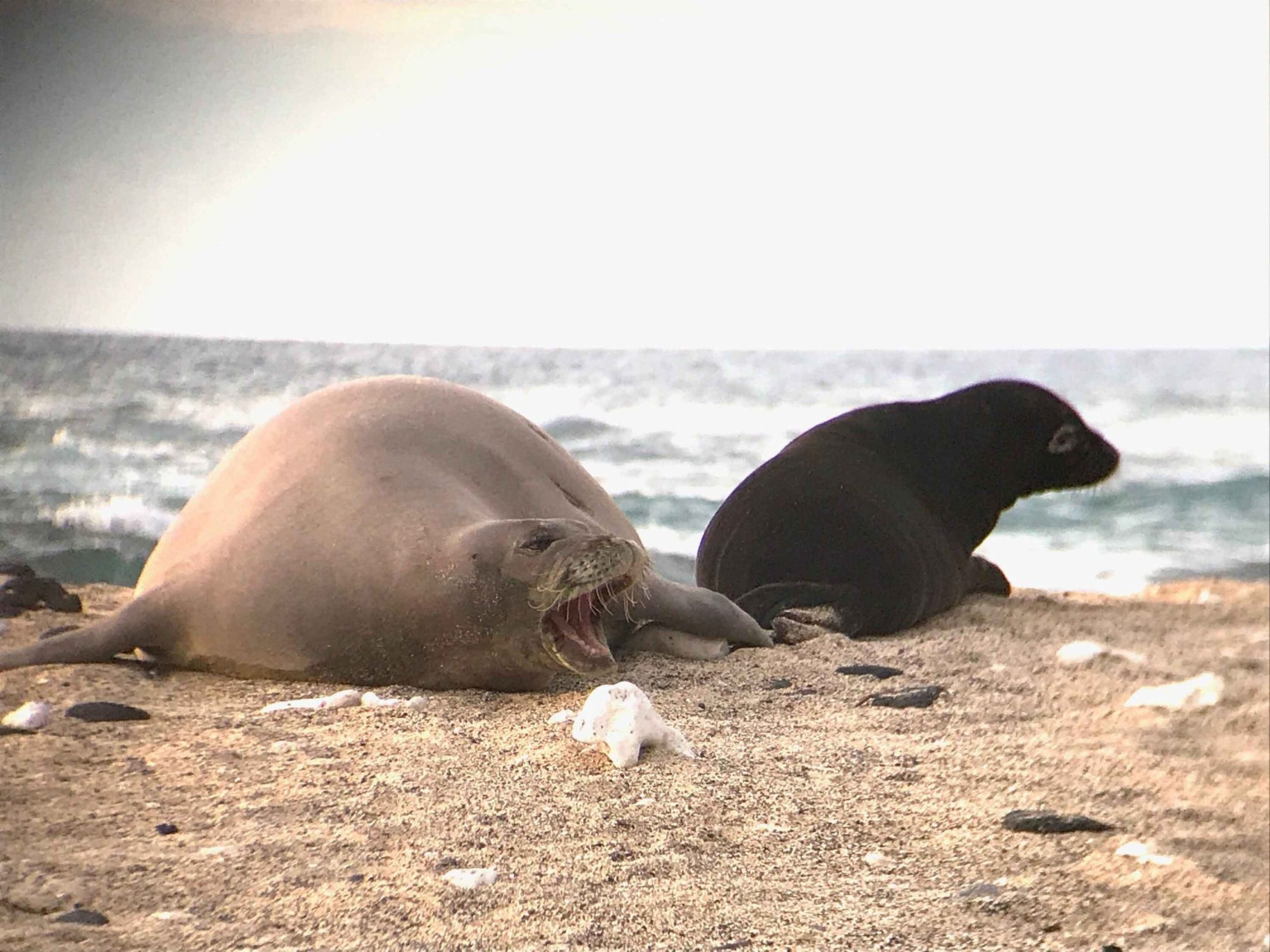The Endangered Hawaiian Monk Seal Welcomes New Pup into the World

One of the most endangered marine mammals in the world, the Hawaiian monk seal has been in existence for over 15 million years. With less than 1,100 monk seals left on the planet, the excitementover this year’s successful birth of a new pup in Kona, Hawaiʻi is something to celebrate.
Last February, Hawaiʻi Island welcomed a new baby monk seal into the world. A 10-year-old monk seal named RA20 gave birth to her second pup on February 8 th . This is RA20’s second successful birth, with her last pup, Manuʻiwa now over a year old. Her fist pup passed away after only two days.
“RA20 and her pup are progressing well and are now into their third month together,” said Dr. Claire Simeone, The Marine Mammal Center’s Hospital Director at Ke Kai Ola in Kailua-Kona. “The pup is gaining weight every day and RA-20 takes the pup out on shallow swims in and around their nursing area. We estimate the pair are almost halfway through to the weaning date and will continue to monitor the area until then.”
The Marine Mammal Center has not released the location of the mom and her pup for protective purposes. Hawaiian monk seals nurse for approximately one month before beginning the weaning process and learning to care for themselves. Therefore, her new offspring should now be well on thier way to indepdence.
While monk seal pups are nursing, people are asked to stay a significant distance from the mother and her offspring. Seals are extremely territorial while nursing and have been known to abandon their pups if they are approached by humans. In 2018, two monk seal pups were born on Hawaiʻi Island, and neither survived.
RA20’s new pup is one of approximately 300 monk seals who make the Island of Hawaiʻi their home. Over the past ten years, their numbers are declining at a rate of 3 to 4 percent per year. Contributing to this reduction in numbers is the fact that newborn pups have a 1-in-5 chance of living into adulthood.
To help preserve the Hawaiian monk seal, scientists recommend beachgoers obey the following guidelines:
1. Give seals space if you see them on the beach or in the water – stay at least 150 ft. away
or stay behind any signs or ropes.
2. Don’t feed the seals or discard old bait or scraps into the water.
3. If you encounter a seal, take a short break or change locations.
4. Reduce seal attractants in the water while fishing and use a barbless circle hook.
5.In addition to keeping a safe distance from monk seals, report sightings on Hawai‘i Island to the Center’s response team at the 24-hour hotline: 808-987-0765.
Credit Tom Stigar © The Marine Mammal Center_NOAA Permit #18786

